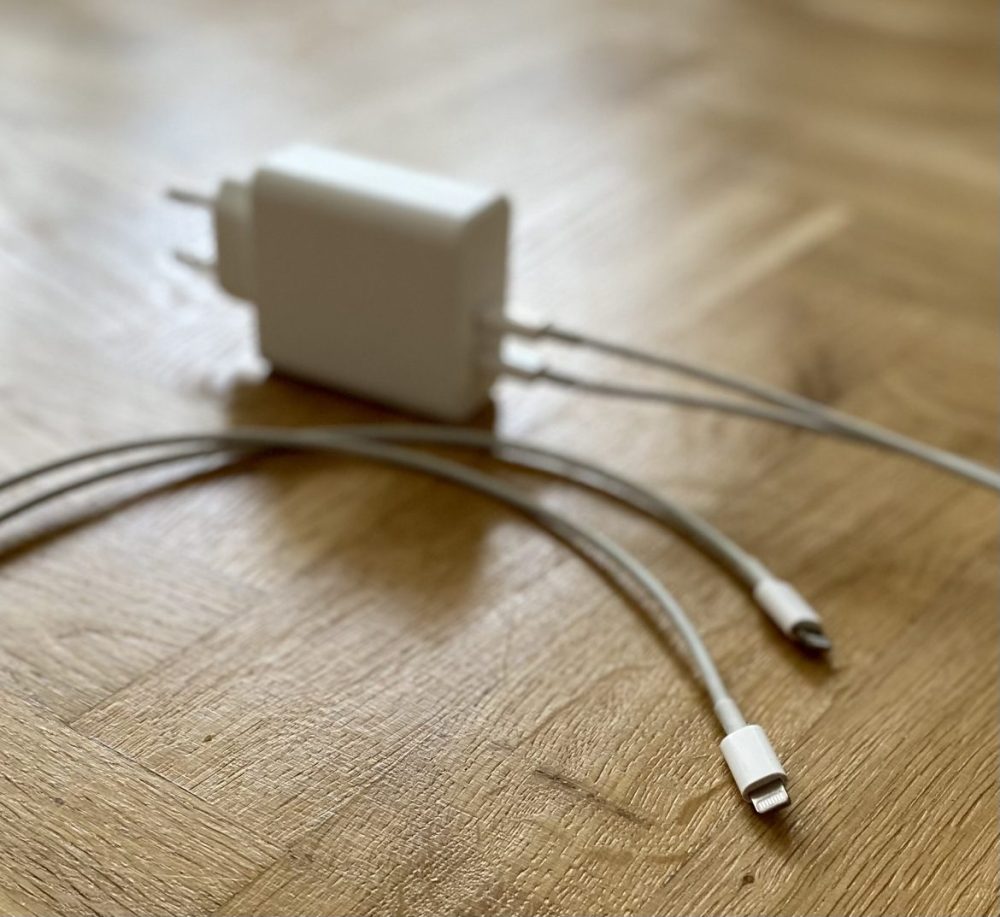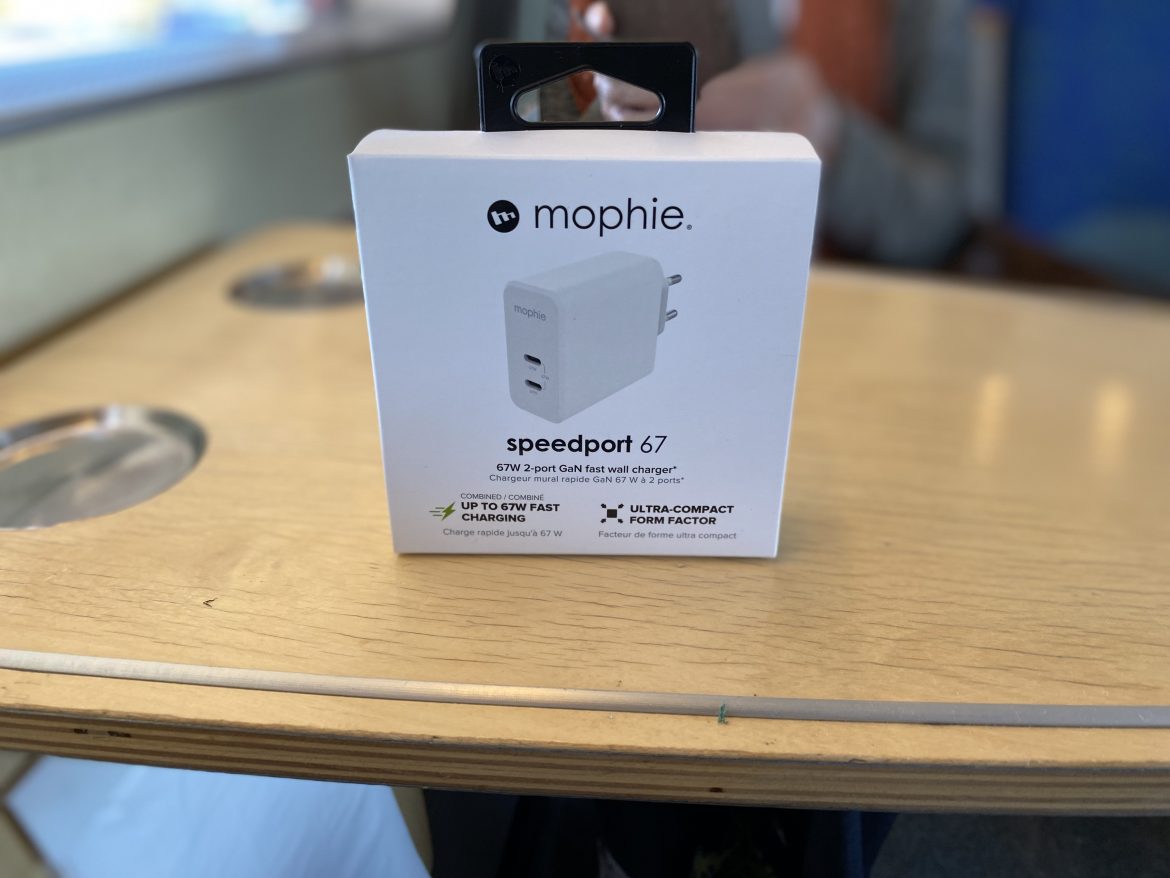TL;DR
Discover the power of GaN chargers with the mophie Speedport 67, a compact yet mighty 67W dual-port charger that's perfect for travelers. GaN technology means faster, more efficient charging, less heat, and a smaller footprint compared to older silicon chargers. The Speedport 67 can juice up two devices simultaneously, making it a versatile companion for your phone, tablet, or even a MacBook Air. While it doesn't include cables, its impressive performance and reasonable price make it a compelling upgrade. Curious to see how it stacks up? Read the full review!
The abbreviation “GaN” is increasingly common in discussions of mobile and computer chargers, often associated with devices that offer impressive power output relative to their size. The mophie Speedport 67 is a prime example, delivering 67W of power through two USB-C ports with PD (Power Delivery) capability. We evaluated its performance extensively during numerous trips this past summer.
What is a GaN Charger?
GaN, an acronym for gallium nitride, represents a semiconductor material that has significantly impacted the electronics industry, particularly in the development of compact chargers.
GaN chargers offer several distinct advantages over traditional silicon-based chargers:
- Efficiency: GaN chargers exhibit superior efficiency compared to their silicon counterparts. Their ability to handle higher voltages and amperages facilitates faster charging for single or multiple devices. Furthermore, GaN technology minimizes energy loss, resulting in greater overall energy efficiency.
- Size: GaN chargers are typically smaller and lighter than traditional chargers. This reduction in size stems from the smaller footprint of GaN transistors compared to silicon transistors, enabling the creation of more compact and portable charging solutions. This is a significant benefit for frequent travelers.
- Heat Dissipation: GaN chargers generate less heat compared to silicon-based chargers. This is attributed to their enhanced efficiency and reduced energy dissipation. Lower heat generation minimizes the risk of overheating, potentially extending the lifespan of both the charger and the connected device.
- Environmental Friendliness: Due to their increased efficiency and smaller form factor, GaN chargers have a reduced environmental impact compared to conventional chargers. Their manufacturing requires fewer materials, and their lower energy consumption helps to mitigate carbon dioxide emissions.

The mophie Speedport 67 features two USB-C ports, enabling simultaneous charging of two devices up to a total power output of 67W. For instance, iPhone models with fast charging support typically draw between 18W and 30W (iPhone 11 to iPhone 14), while a standard MacBook Pro includes a 67W charger from Apple, which, however, does not facilitate fast charging for that particular model (requiring a 90W charger, typically a larger model that we plan to review in the future). Apple has begun to include smaller GaN chargers with its MacBook Air models, but this applies only to those with M2 chips and later. Users of the 16″ MacBook Pro should consider mophie’s higher-powered model (120W), which we will evaluate subsequently, as that laptop requires 96W for optimal charging.
While unconfirmed, there are rumors that the iPhone 15 series may support charging speeds of up to 35W. We will provide verification upon receiving our test units following the product launch. Notably, the latest iPad models appear to support charging up to 30W, despite Apple’s current inclusion of only 20W chargers. Android devices continue to lead in charging capacity, with some models like the OnePlus 10T supporting up to 150W, although this necessitates a considerably larger charger (a comparative summary can be found here).
The following image provides a size comparison:

The integration of two USB-C-to-Lightning ports (preferably MFI-certified for guaranteed compatibility and safety) is a significant advantage, particularly for travelers. This enables simultaneous fast charging (approximately 50% in 30 minutes) for two mobile devices, or the concurrent charging of a mobile phone and a tablet. Alternatively, it allows users to maintain power to a less demanding device such as a MacBook Air while also charging their phone. PC users will appreciate the enhanced portability of GaN chargers, which represent a marked improvement over the bulky power adapters commonly bundled with PC laptops.
The mophie Speedport 67 performs reliably and efficiently. The manufacturer’s suggested retail price of slightly under 700 SEK (though frequently available at discounted prices, as currently seen on ZAGG’s website) is justifiable, especially considering that a charger with two outputs and only 35W costs 750 SEK at Apple. Purchasing two individual 20W iPhone chargers from Apple approaches the same cost, without offering the streamlined convenience of a single charger.
Are there any shortcomings? The inclusion of a USB-C to USB-C or Lightning cable would have been a welcome addition. Or even two. However, this would likely increase the product’s price, and many users likely possess such cables already, or can acquire MFI-certified cables from third-party retailers at competitive prices (note that Apple’s devices have become more sensitive to compatibility issues and are transitioning away from the Lightning connector).
The mophie Speedport 67 is poised to become a standard component of our travel kit for future business trips, unless its higher-powered counterpart proves to be a superior alternative.
Footnote: The mophie Speedport 67 is also available in a single USB-C port configuration at the Apple Store, which includes a 2-meter mophie cable (priced at 995 SEK). This variant is also available via ZAGG’s online store.
ZAGG provided a review unit for this evaluation. The provision of review samples does not influence our editorial independence. Our reviews are conducted objectively, with a focus on providing accurate and unbiased information to our readers and consumers.

